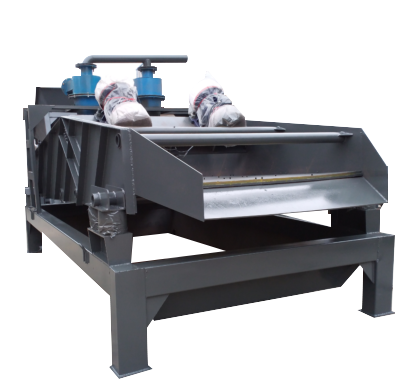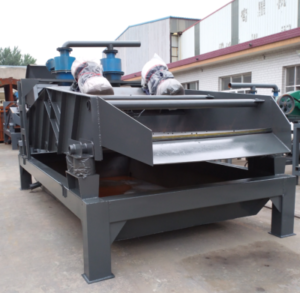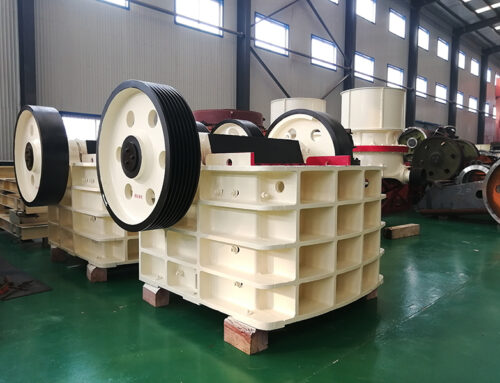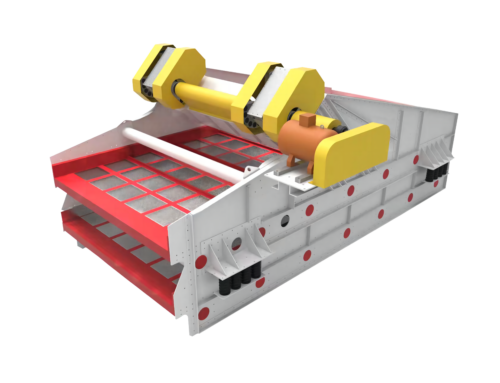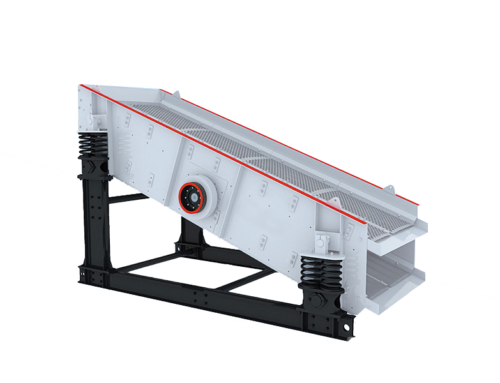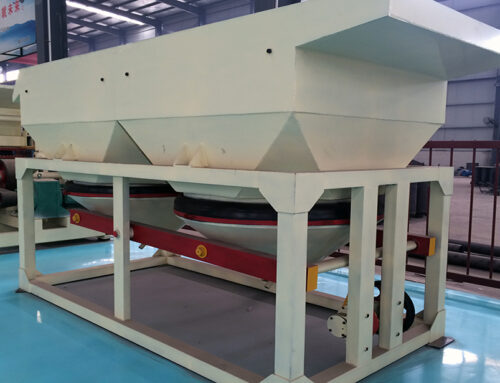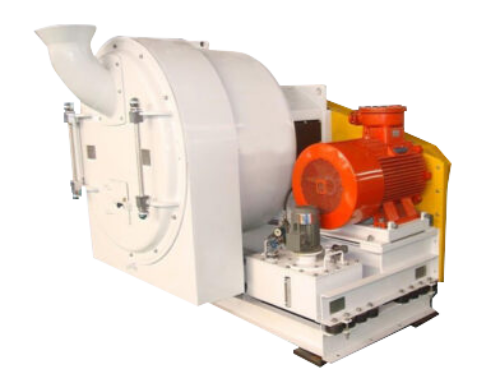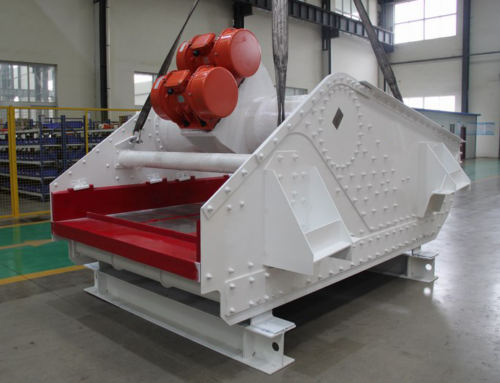High frequency dewatering screen is mainly used for dewatering and screening of materials.
In terms of dewatering, it can efficiently separate the water from the material. For example, after mining, the ore carries a large amount of water, high frequency dewatering screen through high frequency vibration, so that the water through the screen mesh, reduce the moisture content of the ore. In the production of building materials, such as sand and gravel production, it can remove the excess water in the sand and gravel, so that the water content of the sand and gravel meets the standards of building construction.
In screening, it can accurately classify materials. For example, in the mineral processing plant, based on the size of the aperture of the screen mesh, it can separate the ore of different particle sizes. At the same time, it can also remove the impurities in the material, such as in the processing of coal, the gangue and coal dust and other impurities in the coal sieve, so as to improve the quality of the material.
Then how to improve the working efficiency of high frequency dewatering screen?
1.Equipment adjustment:
Pre-installation angle initial adjustment
Adjust the angle of the screen mesh
First of all, make sure that the installation site is level. Use a level to measure the installation area and mark the horizontal datum line, which is the basis for ensuring the accurate installation angle of the dewatering screen.
According to the model and size of the high-frequency dewatering screen, prepare the corresponding installation tools, such as spanners, jacks, etc., and make sure that the tools are intact and the accuracy meets the requirements.
For most HF dewatering screens, the screen box should be kept horizontally level with the horizontal plane during installation. This can be achieved by placing shims on the support feet at the bottom of the dewatering screen. A level is placed on the transverse frame of the screen box and adjusted by adding or subtracting shims until the transverse level is achieved.
The angle of the main part of the screen deck is usually about 5° off the horizontal. An angle gauge can be used to determine this angle. Place an angle gauge on the front edge of the screen plate and adjust the height of the support feet at the front of the screen box to bring the angle to a predetermined value.
The rear of the sieve plate is typically angled at a 45° angle to the main plate. Again using an angle measuring device, measure the rear of the screen plate where it meets the main board and achieve this angle by adjusting the position of the supporting feet or connecting parts at the rear end of the screen box.
Fine-tuning during installation
After installing the HF dewatering screen into a fixed position, install the support springs and other components. Make sure that the spring is firmly installed and accurately positioned, as the spring’s elasticity and installation angle will have some effect on the final angle of the screen.
After connecting the screen box and vibration motor and other equipment, turn on the equipment for no-load test run. Observe the movement of the screen mesh and check whether there is any local tilt or angle not meeting the requirements.
If you find that the angle of the screen needs to be adjusted during the no-load test run, you can adjust the micro-adjustment bolts of the support feet to make a small angle change. The range of each adjustment should not be too large, generally 0.5 ° – 1 ° is appropriate.
After adjustment, run the equipment again and observe the flow of materials on the screen. If the material can flow smoothly from the feeding end to the discharging end, and the distribution on the screen mesh is relatively uniform, without accumulation or too fast sliding phenomenon, it means that the screen angle is basically appropriate.
Inspection and optimisation after operation
After the equipment is put into normal production and full-load operation, continue to observe whether the screen angle is suitable. At this time, we should pay attention to the material handling capacity and humidity and other factors on the screen angle. If the processing capacity is large or the humidity of the material is high, it may be necessary to optimise the screen angle appropriately.
According to the actual situation of full-load operation, if the dewatering and screening effect of the material on the screen mesh is found to be unsatisfactory, the screen angle can be adjusted again. For example, if the material is piled up in the middle of the screen mesh, the angle of the front part of the screen mesh may be too small, and the angle of the front part can be increased appropriately; if the material flows out of the screen mesh too quickly, and it is not sufficiently dewatered and screened, it may be necessary to reduce the angle of the overall angle or adjust the angle of the back end, so that the material stays on the screen mesh for a longer period of time as appropriate. After adjustment, continuously observe the operation of the equipment until the best dewatering and screening effect is achieved.
Optimise screen tension
Suitable screen tension can ensure the vibration effect of the screen, so that the material can be better dispersed and sieved on the screen. You can open the top support bolt of the dewatering screen, relax the support bar, adjust to the proper screen tension and then lock the support bar.
Adjust the vibration frequency and amplitude: according to the characteristics of the material and the requirements of dewatering, adjust the vibration frequency and amplitude of the vibrator through the frequency converter and other equipment. Generally speaking, increasing the amplitude and raising the vibration frequency can enhance the material’s ability to penetrate the screen, but we should pay attention to avoid excessive vibration damage to the equipment, and we should also consider the equipment’s carrying capacity and stability.
Adjustment of vibration frequency and amplitude
According to the characteristics of the material and dewatering requirements, adjust the vibration frequency and amplitude of the vibrator through the frequency converter and other equipment. Generally speaking, increasing the amplitude and vibration frequency can enhance the material’s ability to penetrate the screen, but we should pay attention to avoid excessive vibration damage to the equipment, and we should also consider the equipment’s load-bearing capacity and stability.
2.Equipment maintenance:
Regularly clean the screen mesh: in the process of use, the screen mesh is easily blocked by materials, resulting in a decline in screening efficiency. Therefore, it is necessary to regularly clean the debris and clogging on the screen mesh to keep the screen mesh free. You can use high-pressure water gun flushing or mechanical cleaning and other ways to clean up.
Check and replace the spring: check whether the support spring of the screen box is normal or not, and replace it in time if it is damaged or not rigid enough. The state of the spring will affect the vibration effect of the equipment and the force of the material, thus affecting the efficiency of the dewatering screen.
Maintain the motor: regularly check the running condition of the motor, including whether the temperature, current and sound of the motor are normal. At the same time, in accordance with the specified time and requirements for motor maintenance, such as replacing the bearing grease, cleaning the motor, etc., to ensure the normal operation of the motor.
3.Material control:
Control the feeding speed and the amount of material: keep the uniform and continuous feeding, avoid feeding too fast or too slow. Too fast feeding speed will lead to the accumulation of materials on the screen surface, affecting the screening effect; too slow feeding speed will reduce the utilisation rate of the equipment. According to the processing capacity of the equipment and the characteristics of the material, reasonably adjust the feeding speed and feeding volume.
Control the particle size and humidity of the material: pre-treatment of the material into the high-frequency dewatering sieve, control its particle size distribution and humidity. Too large or too small particle size and too high humidity will affect the efficiency of the dewatering screen. If the humidity of the material is high, it can be pre-dried first; for the material with inappropriate particle size, it can be crushed or screened and other pre-treatment.
4.Equipment selection and upgrading:
Selection of suitable screen: according to the characteristics of the material and screening requirements, select the appropriate screen material, aperture and shape. For example, for viscous materials, you can choose a larger aperture or a screen with self-cleaning function; for materials requiring high-precision screening, you can choose a smaller aperture and higher precision screen.
Upgrade equipment components: you can consider upgrading some key components of the equipment, such as the use of more advanced vibrators, vibration damping devices, etc., to improve the performance and stability of the equipment. For example, the use of hydraulic accumulator damper can effectively reduce the vibration and noise of the equipment and improve the service life of the equipment.
In short, the use of dewatering screen in mining machinery is essential to improve the efficiency of high-frequency dewatering screen need to start from the equipment adjustment, equipment maintenance, material control and equipment selection and upgrading, and comprehensively consider a variety of factors to find the most suitable methods and measures. Only in this way can we give full play to the advantages of high frequency dewatering screen and improve the production efficiency.

